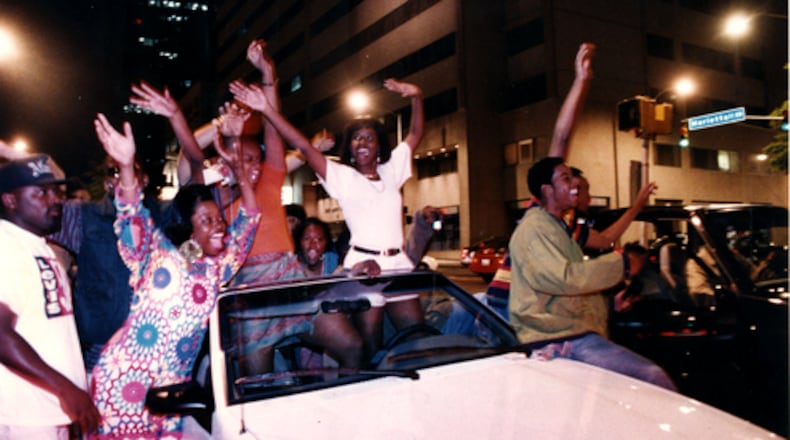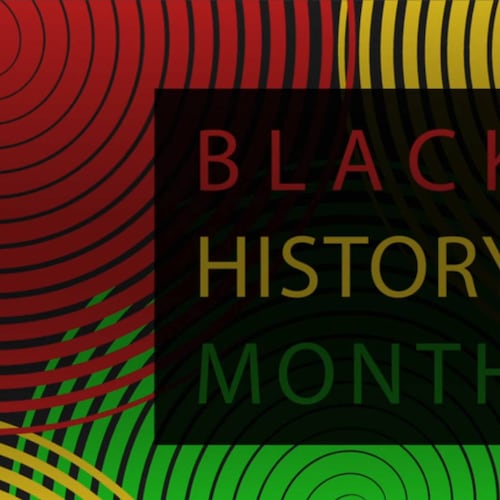If your older relatives attended Freaknik during its heyday, filmmaker Deshawn Plair can’t promise you won’t spot them in the new Hulu documentary.
“I’m not saying you won’t see an auntie, and I’m not saying she won’t be twerking in the street,” she told The Atlanta Journal-Constitution. “But if you do see an aunt or your mom, it’s a reminder that they were young once.”
“Freaknik: The Wildest Party Never Told” is out now and explores the history of Atlanta’s legendary spring break festival of the 1980s and 1990s. From its humble beginnings to its atmospheric rise and dismal demise, the 90-minute movie aims to tell the full story – the good and the bad.
“We want viewers to see the Black joy,” said Plair, the film’s supervising producer. “But we don’t shy away from the darker side.”
The documentary features interviews with former Atlanta mayor Kasim Reed, former music executive Shanti Das, and rappers Lil Jon, Ceelo Green and 21 Savage. They all share memories and discuss the epic street party’s cultural impact.
Plair, a three-time NAACP Image Award winner, spent more than a year working on the storyline, sifting through dozens of news reports, hours of interviews, and hundreds of photos and videos. She says the process was a labor of love.
During a recent visit to Atlanta for an exclusive screening, the Los Angeles resident discussed her experience as a Black woman producer on the project, along with key takeaways from the film and why you shouldn’t be afraid to watch it.
Credit: Disney
Credit: Disney
Najja Parker: Tell me your first reaction when you learned a Freaknik documentary was in the works?
Deshawn Plair: I did not get to go to Freaknik. I think the last one happened during my freshman year of high school. So it was this urban legend. When the showrunner called and was like, “hey, do you want to be a part of this,” I didn’t understand what we were going to explore. When I started to do research, I was shocked. I was blown away by the rich history and the contributions to culture.
When we announced it to the world, every auntie was so afraid because, you know, they’re church deaconesses and first ladies now. They thought it was going to be this salacious, tell-all exposé. I think people are going to be pleasantly surprised because we tell a very complex, layered story.
NP: The memes and gifs took over social media when the documentary was announced.
DP: I really hope that people see the Black joy. I really hope people learn about the true intent and origin story of what those students from the Atlanta University Center were trying to accomplish, and not what it ended up turning into. But it’s this love letter to Atlanta.
NP: I’m glad you described Freaknik as “Black joy.” Sometimes it seems like the joy gets drowned out by the ugliness that came along. When did that shift happen?
DP: I wouldn’t say only crime contributed to the demise, because it was a lot at play. The Olympics were coming in, and the city was in this cleanup effort. Yes, Freaknik was contributing economically to the city. It was bringing in $15 million, but the Olympics was going to do $2 billion. It was “big bank take little bank,” and that’s what CeeLo Green says in the film.
But also towards the mid- to late-90s, this darker cloud started hovering over. People didn’t even want to come, because it became this free-for-all for men. The city felt like it couldn’t protect young ladies.
In its earlier days, women had agency over their bodies and what they were wearing. It wasn’t even about what guys wanted. Guys would have the little cameras out, and girls would shake it, dance, laugh and move on. But then a select few started to touch inappropriately. It was just something totally different. It was unrecognizable.
NP: As a Black woman, how important was it for you to tell that part of the story?
DP: It was really important. It was a male and female [documentary] team, so it was balanced. As women, we wanted to talk about female empowerment, but we also wanted to talk about the hard stuff.
We have a survivor [of sexual abuse] in the doc. We don’t shy away from it, because I think we need to have difficult conversations. When we think about the legacy of this event, you’ve got to tell the good but you’ve also got to tell the bad.
NP: Music is a part of the good. How did Freaknik help expose Atlanta’s hip-hop scene?
DP: LaFace Record’s marketing team was on the streets of Freaknik. They were passing out sampler tapes to OutKast’s album. That was a way to get people involved. So it was this cassette that had like a minute snippet of each song to kind of give the crowd a taste. You’ll learn how some of these artists, before their albums would come out, were breaking music to the Freaknik crowd. Where else do you have 200 to 300,000 Black people on the streets? It was a marketer’s dream.
You’re going to learn how Jermaine Dupri really took marketing to a new level. He was slapping So So Def labels on water bottles and towels. You’ll learn about Biggie performing in the park, and you get to see him and Craig Mack.
We talk about a place called The Rim Shop. It was this rim shop in the front with a studio in the back, and [rapper/producer] Erick Sermon was the owner. He talks about who came through the studio at the time. People either visited when they came or they slept on the floor. You’ll really get to see culture in a whole new fresh way. All of this was happening in Atlanta.
NP: How did Freaknik impact Atlanta’s Black culture?
DP: This was really my introduction to the city. It’s truly the Black Mecca. We have people from all over working on this film, and I think that’s really what Freaknik was about. Freaknik was started by the [Washington] D.C. metro club, but they were here at the AUC. It was about people and their contributions from their city and culture coming down to Atlanta because of this Black Mecca.
NP: That speaks to how Atlanta functions in general. I’m a transplant from Memphis. I came for college, and I live here now.
DP: You came, fell in love and you stayed. At its core, that’s really what the film is about. When you got that taste of that culture and that taste of that joy, you stayed. That’s the power of this city. That’s the power of this film.
About the Author
The Latest
Featured



